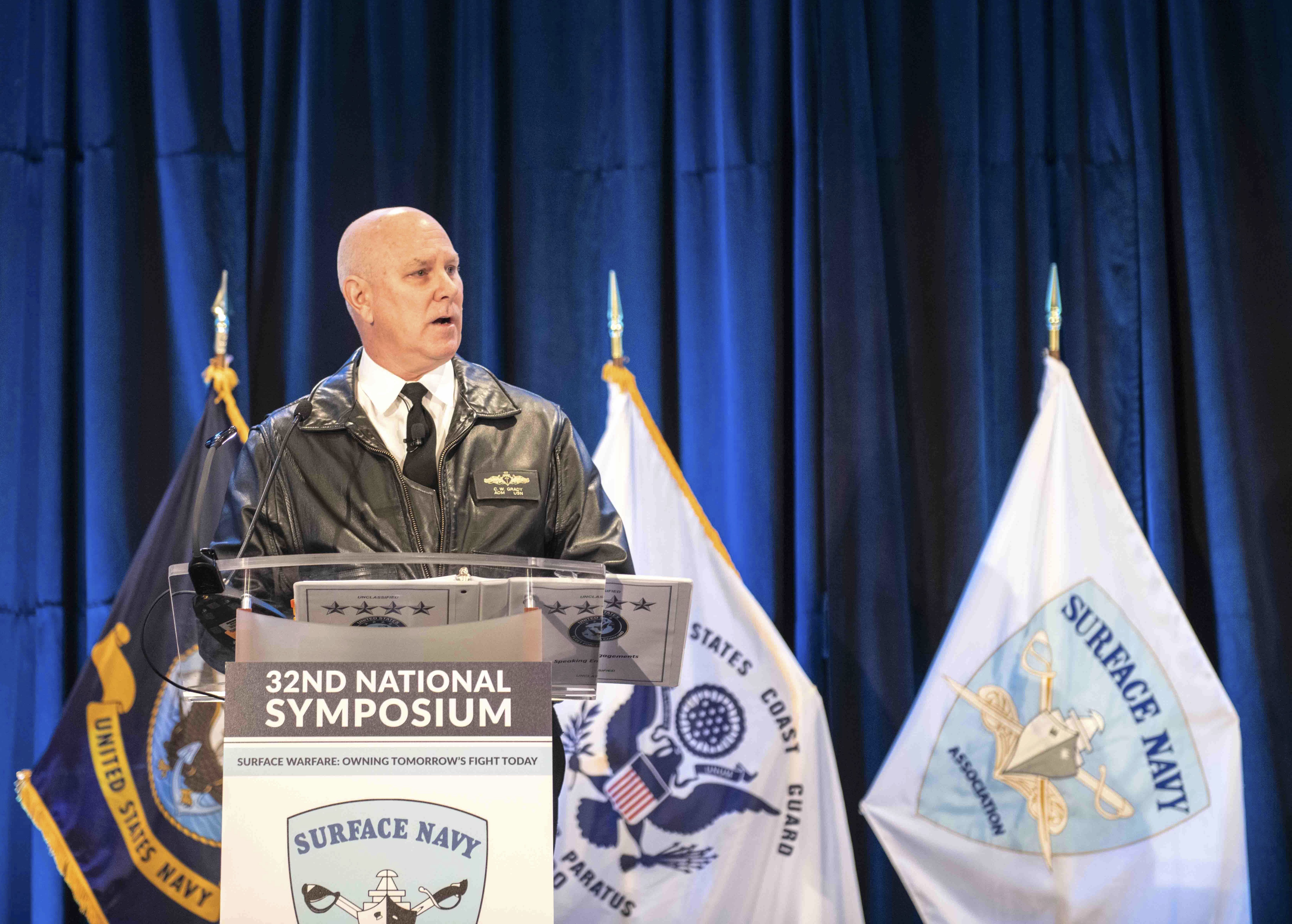
ARLINGTON, Va. — U.S. fleet commanders are nearing the conclusion of two reviews into the efficacy of the Navy’s model for training, sustaining and deploying ships as the East Coast carrier force has struggled to meet demand.
The Optimized Fleet Response Plan, the framework the Navy uses to deploy its ships, has come under sustained criticism as the Navy has failed to meet its maintenance and readiness targets. That has resulted in extended carrier deployments and continued strain on the surface fleet.
In July, the Navy began a look to see if the construct needed tweaking.
“The Navy is doing their own analysis and assessment of the OFRP process. You must recognize it only been going for about four or five years. We’ve only instantiated five strike groups, so there are some lessons there,” U.S. Fleet Forces Command commander Adm. Christopher Grady said on Thursday while speaking at the Surface Navy Association 2020 symposium.
“Then, to make sure we get it right, the Department of Defense has commissioned an additional study to take a look at it and see if it is the correct model or whether it needs to be improved.”
OFRP is a 36-month cycle of built around maintenance and training for a seven-month deployment with a sustainment period in which a ship or strike group could potentially deploy again or surge forward on short notice. The plan endeavors to both keep the force ready enough to embark on short notice and keep maintenance for ships predictable.
Grady defended the underlying tenants of OFRP.
“The ability to rotate the force, to surge the force, to maintain and modernize the force and then to be able to reset in stride all in a system that acknowledges you have to have their proper [command and control], that is disciplined, repeatable, predictable, but yet agile, that gives options to the national command authority — those are the underlying principles of the OFRP, and those will not change,” he said.
However, delays in maintenance for carriers have prevented the model to be used effectively. The OFRP studies come as the service has struggled to keep to maintenance schedules of its carrier force, leaving the East Coast in particular short of deployable ships.
“Maintenance is the number-one driver of that,” Grady said. “It’s the number-one pressurizing driver of the efficacy of OFRP.”
On Wednesday, USS Abraham Lincoln (CVN-72) departed Hawaii to head back to the U.S. after what will likely the longest carrier deployment since the mid-1970s. Its deployment to the Middle East was extended when USS Harry S. Truman (CVN-75) suffered electrical problem that prevented the carrier from being available to relieve Lincoln in U.S. Central Command on time, and no other carriers were able to surge forward to bridge the gap between Lincoln and Truman.
“There were a number of decisions that were made to extend her or to not extend her,” Chief of Naval Operations Adm. Mike Gilday said on Tuesday. “I couldn’t get another carrier behind her very quickly. I couldn’t accelerate other carriers.”
Navy leaders set up the context for the ongoing reviews late last year.
“We understand why the carriers are in the situation they’re in. OFRP was designed – the O in OFRP stands for optimized – it was optimized in 2012 around some different objectives. So we recognize that we have to take a good hard look at it,” Vice Chief of Naval Operations Adm. Robert Burke said in October.
“We are very open to making changes to that readiness plan, and we’ve taken it down to the fundamental assumptions and principles of it, and what do we have to do differently.”





